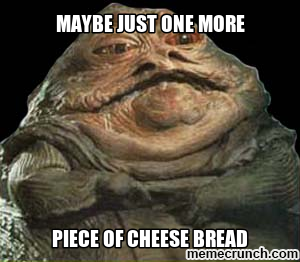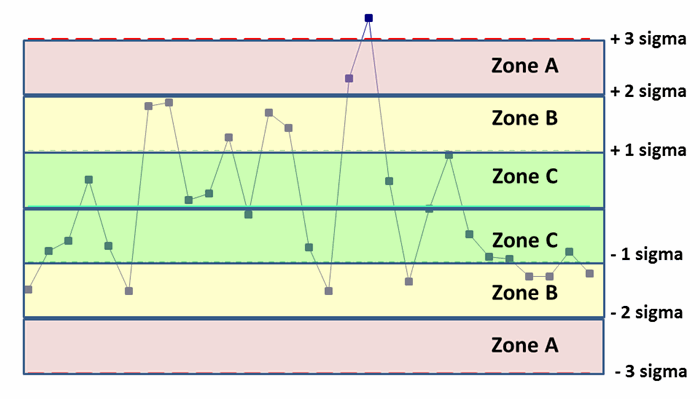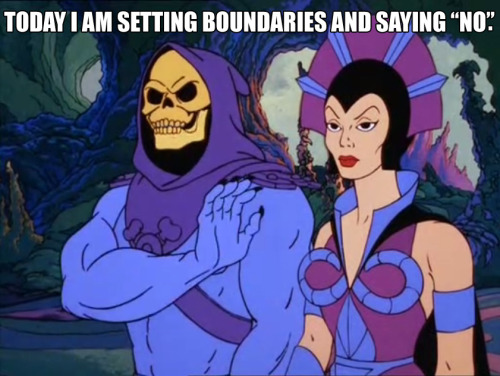I'm fairly comfortable in either but I use cups and their assorted divisions in the kitchen because that's how 99% of the best recipes are written.

Unless my mother writes them, and then it's vague measurements like - enough. I'm pretty sure she wrote them so she wouldn't forget the ingredients, not because she needed to know how much to add.
In reply to Toyman! :
Yup. Americans use metric all the time. We just use U.S. standard also.
The real reason Europe switched wholesale to metric and the U.S. didn't, is because they already had to retool all their industrial machinery after blowing it all up.


tuna55
MegaDork
3/23/23 1:24 p.m.
Keith Tanner said:
Beer Baron said:
RevRico said:
In reply to Beer Baron :
It's terrible for cooking though. A cup varies drastically, 300 grams is 300 grams.
For everyday, normal-scale use, this is a feature, not a bug.
300 grams is 300 grams, which means that anything else is *not* 300 grams. If you can't accurately and precisely measure 300 grams, you're boned. What do you do if you don't have an accurate scale?
A cup can vary drastically, which means that your tolerances can be quite loose, and still be a cup.
Imagine it's circa 1900 and you are cooking. You probably don't have an accurate scale. But you have cups. You can quickly and easily measure - a cup, a half cup, 1/3 cup, and 1/4 cup. It doesn't matter if that cup is 300 grams, 280 grams, or 338 grams. You only need to keep the *proportions* consistent.
Even today. If I'm making pancakes or something - measuring cups are much faster than scales and good enough. I mean, I'm using "a banana" and "2 eggs", not weighing those out and adjusting the recipe to match. Again... this is different if doing really large or really small batches of food at a commercial or laboratory scale.

I'm not buying "300 grams has to be exact and a cup can be very vague". If you want to be sloppy, you can be sloppy in metric as well. You can say "this container looks like it's about 300 grams, and I can easily tell that half of it will now be 150 grams". The math is much easier in metric, US measurements use base 16 (ounces/pounds and sometimes cups), base 12 (cups, and in fractions only), two different bases of small volume (tablespoons and teaspoons) which are usually identified in quarters or sometimes eighths and then there's the mayhem that is fluid volumes (ounces, pints, quarts, gallons).
And I have a cooking scale that could have been around in 1900 :)

Once they start weighing things in Newtons instead of kilograms, then they can talk trash about using units properly. Until then we can laugh at our collective ridicularity, and we haven't even talked about the pound mass yet.
There is a significant difference in measurement when talking about cooking vs baking. Cooking, throw stuff in a pan and see whatvhappens. Baking is much more precise, more chemistry and science.
Weight is probably better for sending recipes, because is that cup of brown sugar packed or loose? (Hint: it's always packed. Flour is not.)
Toyman! said:
I'm fairly comfortable in either but I use cups and their assorted divisions in the kitchen because that's how 99% of the best recipes are written.

Unless my mother writes them, and then it's vague measurements like - enough. I'm pretty sure she wrote them so she wouldn't forget the ingredients, not because she needed to know how much to add.
In the 70s, Pop worked with a Swedish immigrant. Mom was in the hospital, for a week, so the Swede invited Pop over for dinner one night. Yeah, Swedish meatballs. He asked for the recipe, so Gunnar wrote it down on a note card.
Pop looked at it and asked, where the hell am I going to get Ox meat, and how much is "two hands"?
Ula, Gunnar's wife, who was more Americanized, chuckled. "One pound of hamburger. His English not so guut."

Floating Doc (Forum Supporter) said:
I haven't checked the accuracy of this, comments welcome.

Truth:
https://en.wikipedia.org/wiki/Babylonian_mathematics

In reply to Streetwiseguy :
I fully admit that I do cooking in an oven. Eventually I may discover a method of making brownies from a mix without using actual eggs.

But Mr. Celsius wanted it to be the opposite direction.
from Wikipedia: "In 1742, Swedish astronomer Anders Celsius (1701–1744) created a temperature scale that was the reverse of the scale now known as "Celsius": 0 represented the boiling point of water, while 100 represented the freezing point of water.[8"

Beer Baron said:

How did they miss the most important part? https://en.wikipedia.org/wiki/Banana_equivalent_dose

RealMiniNoMore (Forum Supporter) said:
Toyman! said:
I'm fairly comfortable in either but I use cups and their assorted divisions in the kitchen because that's how 99% of the best recipes are written.

Unless my mother writes them, and then it's vague measurements like - enough. I'm pretty sure she wrote them so she wouldn't forget the ingredients, not because she needed to know how much to add.
In the 70s, Pop worked with a Swedish immigrant. Mom was in the hospital, for a week, so the Swede invited Pop over for dinner one night. Yeah, Swedish meatballs. He asked for the recipe, so Gunnar wrote it down on a note card.
Pop looked at it and asked, where the hell am I going to get Ox meat, and how much is "two hands"?
Ula, Gunnar's wife, who was more Americanized, chuckled. "One pound of hamburger. His English not so guut."

And do you have a copy of said authentic Swedish meatballs recipe??
ProDarwin said:
Beer Baron said:

How did they miss the most important part? https://en.wikipedia.org/wiki/Banana_equivalent_dose

Perfect! 1 banana can be a conversion point for length, mass, volume, and energy!

Duke
MegaDork
3/23/23 4:52 p.m.
Streetwiseguy said:
There is a significant difference in measurement when talking about cooking vs baking. Cooking, throw stuff in a pan and see what happens. Baking is much more precise, more chemistry and science.
That is the conventional wisdom, indeed.
But if that is strictly the case, how can there be so many different and varying bread recipes?
If baking is that precise, then most of them wouldn't work.

RealMiniNoMore (Forum Supporter) said:
Toyman! said:
I'm fairly comfortable in either but I use cups and their assorted divisions in the kitchen because that's how 99% of the best recipes are written.

Unless my mother writes them, and then it's vague measurements like - enough. I'm pretty sure she wrote them so she wouldn't forget the ingredients, not because she needed to know how much to add.
In the 70s, Pop worked with a Swedish immigrant. Mom was in the hospital, for a week, so the Swede invited Pop over for dinner one night. Yeah, Swedish meatballs. He asked for the recipe, so Gunnar wrote it down on a note card.
Pop looked at it and asked, where the hell am I going to get Ox meat, and how much is "two hands"?
Ula, Gunnar's wife, who was more Americanized, chuckled. "One pound of hamburger. His English not so guut."

A mom and pop lunch place I used to frequent had hand-formed hamburgers. You always had to ask who made the burgers. Mom had small hands, pop had great big shovel hands.
Contractually required memememe.

Duke said:
Streetwiseguy said:
There is a significant difference in measurement when talking about cooking vs baking. Cooking, throw stuff in a pan and see what happens. Baking is much more precise, more chemistry and science.
That is the conventional wisdom, indeed.
But if that is strictly the case, how can there be so many different and varying bread recipes?
If baking is that precise, then most of them wouldn't work.
That's exactly why there are so many different recipes. Same ingredients, very different results depending on the proportions and the timing.

Once they start weighing things in Newtons instead of kilograms, then they can talk trash about using units properly. Until then we can laugh at our collective ridicularity, and we haven't even talked about the pound mass yet.
I don't see how this is any better than bananas

llysgennad said:
But Mr. Celsius wanted it to be the opposite direction.
from Wikipedia: "In 1742, Swedish astronomer Anders Celsius (1701–1744) created a temperature scale that was the reverse of the scale now known as "Celsius": 0 represented the boiling point of water, while 100 represented the freezing point of water.[8"

I always thought the zones in a SPC (Statistical Process Control) chart were poorly thought out...

Why wasn't the first zone to the left and right of the CL (Center Line) called"A"? If I want to build a chart that includes +/- 4 sigma, what do I call that zone "Z"???

j_tso
Dork
3/23/23 6:11 p.m.
Oapfu said:
In reply to Streetwiseguy :
I fully admit that I do cooking in an oven. Eventually I may discover a method of making brownies from a mix without using actual eggs.
Supposedly the Betty Crocker cake or brownie mix didn't need eggs at first, but people didn't buy it until 1 egg was added to the preparation because it made them feel like they were cooking.
meme unrelated

RX Reven' said:
llysgennad said:
But Mr. Celsius wanted it to be the opposite direction.
from Wikipedia: "In 1742, Swedish astronomer Anders Celsius (1701–1744) created a temperature scale that was the reverse of the scale now known as "Celsius": 0 represented the boiling point of water, while 100 represented the freezing point of water.[8"

I always thought the zones in a SPC (Statistical Process Control) chart were poorly thought out...

Why wasn't the first zone to the left and right of the CL (Center Line) called"A"? If I want to build a chart that includes +/- 4 sigma, what do I call that zone "Z"???
C is in control zone, b is bad zone, a is aaaaaahhhh zone. If you are past that, quit.


































































